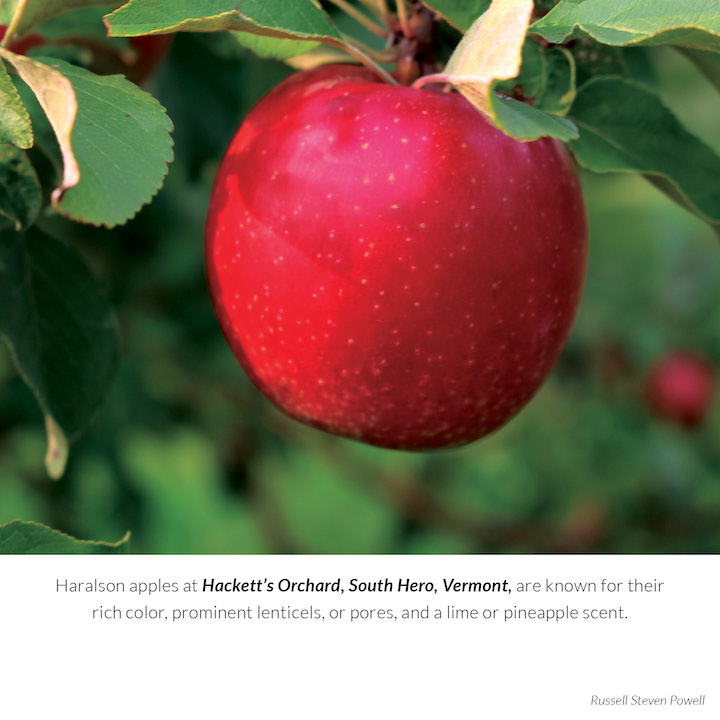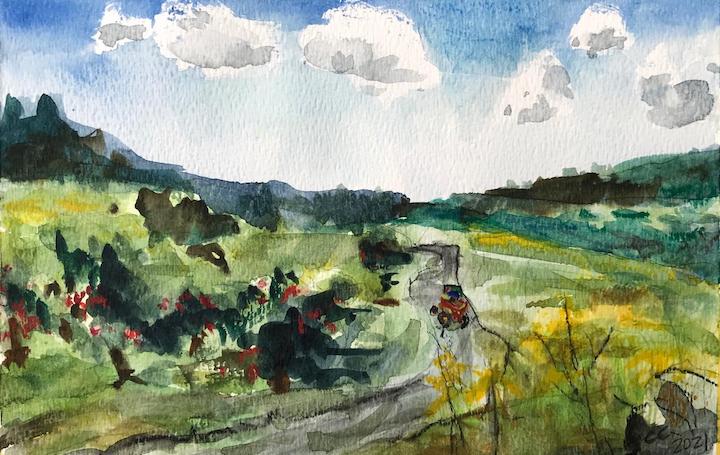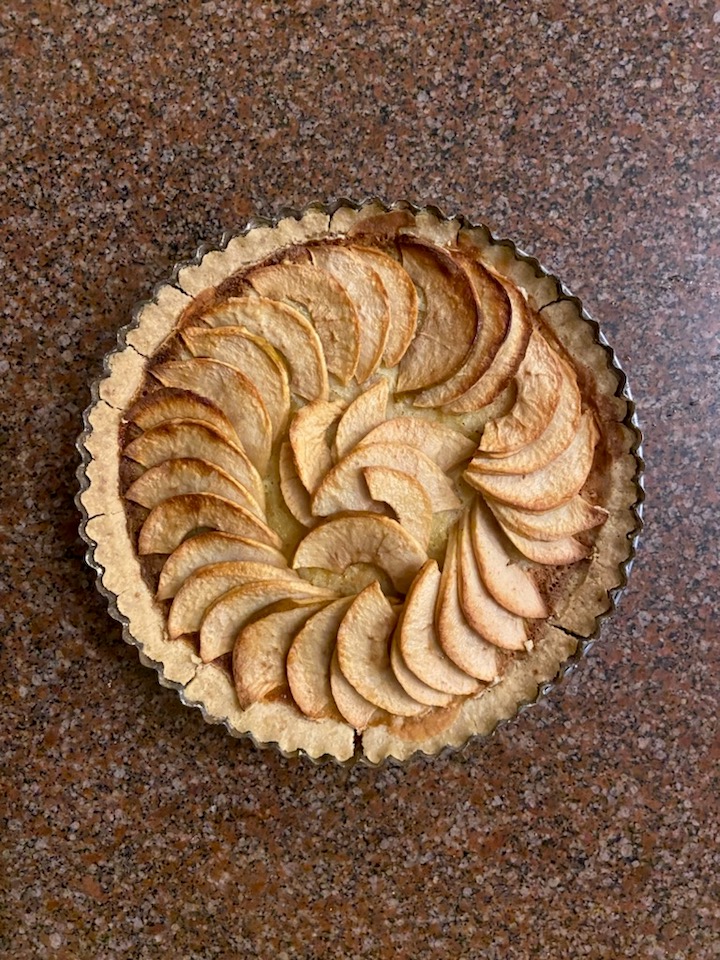
I TAKE AN APPLE with me whenever I walk, and I walk every day. I forget about it until I am more than halfway home, just around the time I can use a little energy boost and hydration.
Apples are perfect for such occasions. I love bananas on cereal, but they are too delicate for the rigors of a walk. An orange is as juicy as an apple, but it leaves me with sticky hands. Apples, in contrast, jostle around in my pocket without harm. They don’t need peeling, and, while copious with juice, they never leak, even as I eat them.
That first bite of an apple is like the initial shock of diving into a cool lake on a hot summer day: a sudden flood of sensations, refreshing and intense. The apple explodes with flavor, texture, and juice. Each one is a surprise. No two apples are exactly alike.
There are different varieties, of course, more than 100 in New England in a broad continuum of tastes from tart to sweet, with textures crisp to creamy, large or small, in nearly every color of the rainbow. Apples continue to ripen after they are harvested, and the flavors of many evolve in storage, gradually turning sweeter, juicier, and more complex. Their texture changes, too; over time most varieties become less crisp than when they were picked.
When I bite into an apple, I’ve got a pretty good idea of what to expect, but that’s it. I’ve had some of the best Cortlands and McIntosh of the year in the past week, firm, softer and sweeter than in September, but still tangy and loaded with apple flavor, and almost dripping with juice.
Some varieties have denser flesh or store better than others, but an apple’s texture depends in large part on how it was stored. Whether at the orchard, grocery story, or home, apples must be kept cold to retain maximum crispness. Advancements like cold-atmosphere storage, in which apples are stored in sealed rooms immediately after they are picked, and most of the oxygen removed to arrest their ripening, enables us to have crisp Cortlands and Macs well into spring.
The Macouns in my refrigerator are still crisp, as are many late-season apples, from Empire and Fuji to the heirloom Roxbury Russet and a newer apple, the appropriately named EverCrisp.
* * *

CHILDREN’S AUTHOR Christine Copeland volunteered for New England apple growers several times this fall, more than 20 years after her tenure as executive director of New England Apple Association.
From her home in western Massachusetts, she traveled to Sholan Farms in Leominster with her watercolors in early September to paint plein air in “Art in the Orchard,” the inaugural New England Apple and Cider traveling museum event.
In mid-September, Christine and her husband, Bill (who makes an excellent dry hard cider), volunteered in New England Apple Association’s booth in the Massachusetts Building of the Eastern States Exposition (“The Big E”).
Now she shares her recipe for French Apple Tart:
MY MOM was French, and I spent many happy childhood summers in the center of France on my grandparents’ farm. One of my happiest memories was eating the French apple tarts we would have on special occasions! So I started making tarts for my own children and extended family, especially during the holidays.
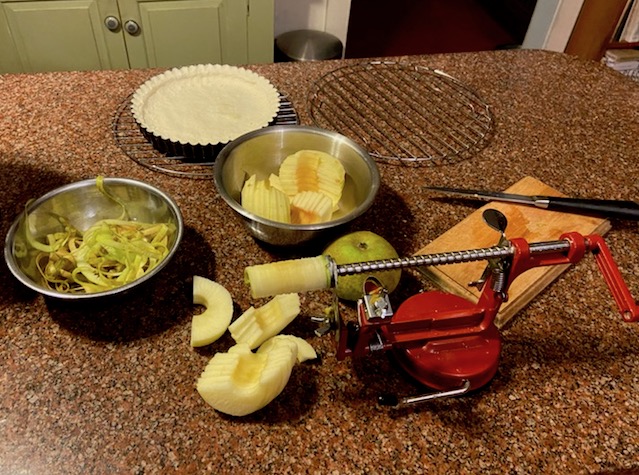
There was no way I could or would duplicate the French flaky dough, so I used a pâte sablée, or sandy crust (literal translation), that I had used for pumpkin pies when I worked in a bakery with my friends during my hippie years. It works great and holds together just fine.
You can use this recipe with any fruit, really. I love apples for the obvious reasons. But because the tart doesn’t cook that long, it may make sense to sauté the apples with the sugar and lemon in a frying pan (gently! so they don’t break) just a little beforehand, especially if the apples are more sweet than tart.
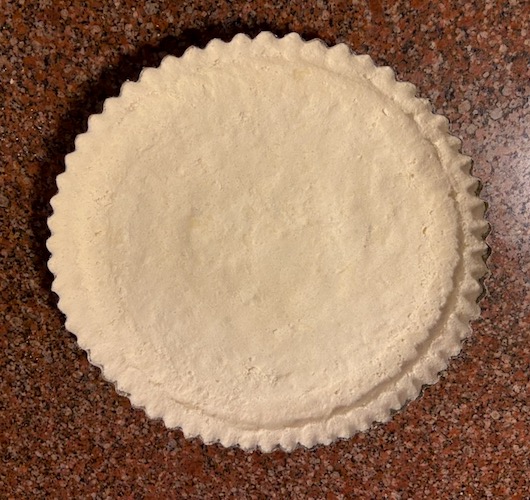
The secret ingredient to the topping is Fiori di Sicilia extract. Described by King Arthur Baking Company as “A combination of citrus and vanilla with a pleasingly floral aroma,” Fiori di Sicilia translates as Flower of Sicily. The vanilla is delicious, of course, but this adds a special floral accent. Don’t use too much or you’ll ruin your tart, only a few drops!
* * *
If you would like to share a favorite apple recipe or show your support for locally grown apples, become a member of New England Apple Association. It comes with a calendar!
French Apple Tart
Recipe from Christine Copeland, former executive director, New England Apple Association
Brisée (shortbread) crust
2 c flour
1 T sugar
dash salt
1/2 c butter
In medium bowl, mix dry ingredients together, then cut in butter with a pastry blender or whisk attachment on mixer, which, literally, turns it into a sandy texture (pâte sablée).
Filling
3-4 New England apples, cored, peeled, and sliced
3 T lemon juice
1 T butter
1 T sugar
In skillet, fry apples carefully with lemon juice, butter, and sugar for a few minutes, until they begin to soften. Cool before transferring to crust. Arrange apples in circle, overlapping slices 1/4” to 1/2”.
Topping
1 egg
1/4 c sugar
3 T butter, melted
1/2 t vanilla
1/8 t Fiori di Sicilia
Drizzle over apples.
Bake 30 minutes, or until golden brown.
